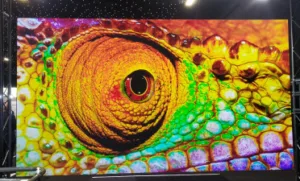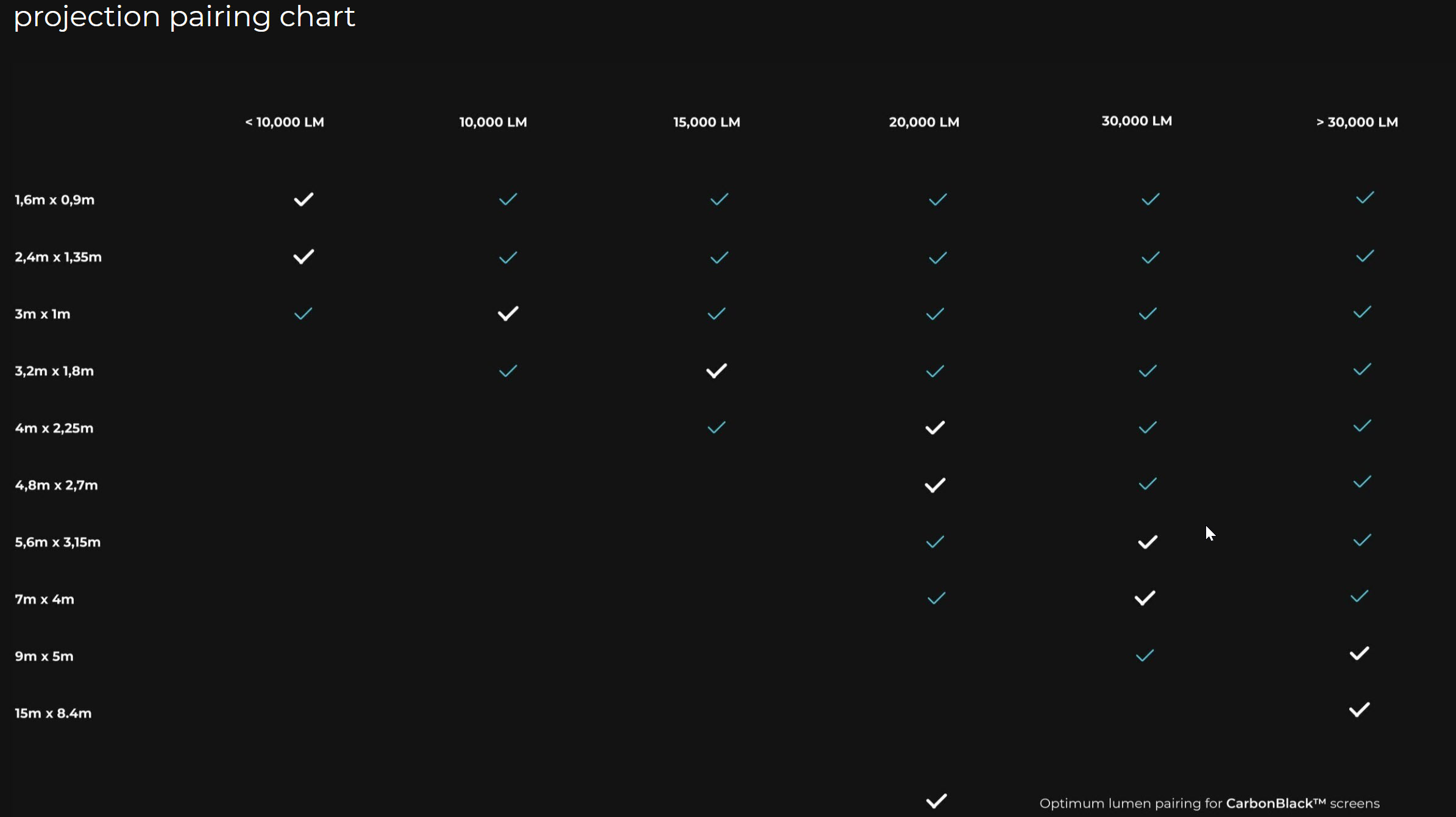
Some companies, including Barco and Digital Projection, were just there to chat to customers and partners. On the other hand, Panasonic had a good range of projectors on show including and alpha sample of its latest single chip DLP projector. We got a demo of some colour bars and the firm was right – it has improved the colour performance of its engine from the weak reds and yellows of previous years (although the unit on show had not been calibrated). Changes have been made in the way the colour wheel is made and optimised and that has helped.
However, the highlight of the show for me was a new projection screen that I haven’t seen before. Some years ago, I did a lot of display technology training for a number of large international brands. I used to cover the projector lens and ask what colour the screen was. “White, of course” was the answer, but then I would show a picture on the screen that had some black in it. “Now what colour is it?”. The point was to demonstrate how flexible the brain is in perceiving colour and different levels of brightness.
I have paid attention to projection screens from time to over the years (often around the Projection Summit when it was alongside Infocomm and indeed, in 2007, there was a whole session at the Summit on this topic), but I’m no expert. I did get very excited when in 2014 I saw some technology from Sony’s recordable media division which had dual film layers. The top one selectively reflected certain narrow colours and the back one absorbed light. That meant that it didn’t reflect most of the ambient lighting in the environment, but did reflect light from a projector that matched the screen. That meant much darker blacks. Sadly, I don’t think the technology ever came to market, at least not from Sony.
I have seen other ambient light rejection (ALR) screens (we first reported on these in 2004 although they were mainly for rear projectors at that time) and these typically work by reflecting light from the direction of the projector towards the audience, while blocking the light arriving from other angles. These are often used with UST projectors to make ‘projection TVs’ as the light from the projector is usually coming from below, whereas the ambient light comes from the sides or above or even straight in front. The optical elements of ALR screens can negatively impact the sharpness of the display, so you need to match the right screen to the right projector.
I have also seen screens that are simply darker, typically lighter or darker grey. These give better contrast at the expense of brightness.
 The CarbonBlack screen had great contrast. Image:Meko
The CarbonBlack screen had great contrast. Image:Meko
At ISE, Lang was showing a new black screen – and I mean really black screen from a Dutch company CarbonBlack, based in The Hague. Staff from Lang told us that it was genuinely emissive, not reflective – however, it turned out to be reflective after all! It does give a very, very good matt black effect as the surface of the screen is coated with Carbon Nanotubes (CNTs). One of the issues that can affect ALR screens is that you can get some hot-spotting with the centre of the screen being brighter. The display at ISE did not show that at all – it looked very uniform to the naked eye.
Of course, a black screen does need a brighter projector to get the same peak brightness and Lang told us that it uses a rule of thumb that you might need around three times the output compared to a regular unity gain screen. However, you get so much more contrast, you might need less than that to have a good impact. CarbonBlack has a chart with suggested lumen ratings for different sizes of screen and I must say that you do need plenty of light for the size of screen shown.
The material is not much more expensive than other alternative screen technologies, Lang said and pricing is clear on the CarbonBlack site.
A big bright projector is going to take some space and use some power, but the high level of visual quality could make a system a reasonable alternative to an LED display, and then the price might look cheap! We reached out to CarbonBlack for a bit more information and technical detail, but had not got a response at press time. If we get more, we’ll let you know.
DTen Makes Zoom-specific Displays
Another company that I saw at the show was DTen, which has three displays that are dedicated and optimised for Zoom. One is a 27″ desktop device, while the other two are 55″” and 75″ UltraHD displays with integrated touch. They do only run Zoom, (with HDMI to be used as ‘dumb’ displays) but looked like nice designs and could prove an attractive alternative to general purpose displays, although you’d have to be sure about a plan to use Zoom in the long term. (BR)



